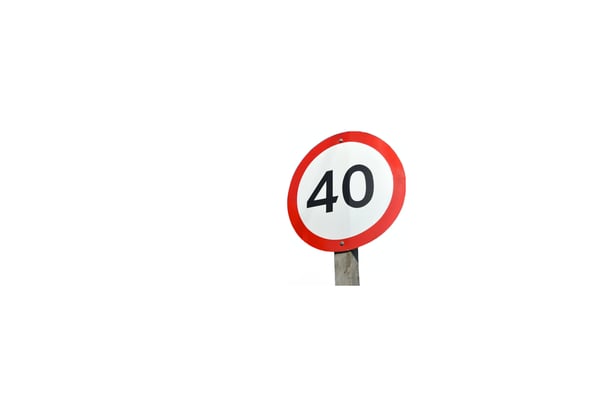SaaS Valuation Multiples: Understanding the Rule of 40
In the world of Software as a Service (SaaS), few benchmarks have shaped valuation conversations as much as the “Rule of 40.” For investors, acquirers, and SaaS founders alike, this simple yet powerful formula offers a quick snapshot of a company’s financial health and balance between growth and profitability. In M&A discussions, understanding how your business performs against this metric can significantly influence deal negotiations and enterprise value.
This article explores the origin, application, and strategic relevance of the Rule of 40—particularly in today’s evolving tech market where capital efficiency is once again in focus.
What Is the Rule of 40?
The Rule of 40 posits that a SaaS company’s annual revenue growth rate and EBITDA (or operating profit) margin should together equal or exceed 40%.
Formula:
- Growth Rate (%) + EBITDA Margin (%) ≥ 40%
For example, a company growing at 25% annually with a 15% EBITDA margin would meet the Rule of 40. So would a business growing at 40% with breakeven profitability, or one growing at 20% with a 20% EBITDA margin. The premise is that a company delivering either strong growth or strong profitability—or ideally both—is likely to be financially healthy and strategically attractive.
Why the Rule of 40 Matters in SaaS Valuation
Originally popularized by investors like Brad Feld, the Rule of 40 emerged during an era when many SaaS companies were prioritizing growth at the expense of profitability. The metric helped bring discipline back into valuation conversations, offering a way to balance momentum with sustainability.
Today, it remains a central heuristic in M&A and fundraising discussions. Companies that exceed the Rule of 40 are often perceived as well-managed and more likely to justify higher valuation multiples—whether based on ARR, EBITDA, or revenue.
Valuation Multiples and the Rule of 40
Enterprise Value (EV) to ARR multiples are a common lens through which SaaS businesses are valued. According to data from SaaS Capital and other benchmarks, as of 2023:
- Median SaaS valuation multiples hover around 7.2x ARR, down from pandemic-era peaks.
- Companies exceeding the Rule of 40 typically command premium multiples—often 8–10x ARR or higher depending on growth quality and market positioning.
Conversely, companies below the threshold may need to justify their valuation with strong product differentiation, defensible IP, or strategic synergies for the acquirer.
Firms like iMerge frequently use the Rule of 40 in conjunction with customer retention metrics, gross margins, and LTV:CAC ratios to build a robust valuation case during M&A processes.
Strategic Use of the Rule in M&A Scenarios
Whether you’re preparing for an exit or assessing acquisition targets, the Rule of 40 helps filter and prioritize opportunities. Here’s how:
- For Sellers: Meeting or exceeding the Rule of 40 improves buyer confidence and negotiation leverage. It also signals that your business is scalable and capital-efficient—traits that buyers and investors increasingly value.
- For Buyers: The Rule of 40 serves as an early-stage screen to identify companies that combine growth with sound unit economics. This is especially relevant in today’s environment where cash-burning models are under increased scrutiny.
In diligence, a business with 20% growth and 15% EBITDA margin might raise fewer red flags than a company growing 60% with significant losses, even if their top-line figures are similar.
When the Rule of 40 Falls Short
While widely used, the Rule of 40 has its limitations. It tends to favor mid- to late-stage businesses that have begun to balance growth with profitability. For earlier-stage startups, aggressive investment in product development and customer acquisition often suppresses margins, making the metric less relevant.
Additionally, sector-specific factors may require adjustments. For instance:
- Cybersecurity companies often command higher multiples regardless of Rule of 40 performance due to market demand and defensibility.
- Vertical SaaS businesses may demonstrate slower growth but high retention and profitability, which can still yield strong valuations.
Adjusting the Bar: The “Rule of 50” and Market Volatility
Some investors now advocate for more stringent benchmarks, particularly in a capital-constrained environment. The so-called “Rule of 50” is gaining attention, especially for companies seeking premium valuations. Meanwhile, in uncertain markets, some flexibility around the threshold may apply—especially if the business shows strong qualitative factors like product moat, high LTV, or strategic buyer fit.
Conclusion: A Benchmark, Not a Blueprint
The Rule of 40 remains one of the most effective shorthand tools for evaluating SaaS business performance—but it should be used in context. A high Rule of 40 score can unlock valuation premiums and increase buyer engagement, but it’s just one piece of a broader assessment that includes market positioning, product strength, and capital efficiency.
At iMerge, we help SaaS founders understand how to position their business within this framework—and beyond it. Whether you’re preparing for a sale or assessing strategic options, aligning growth and profitability isn’t just good metrics—it’s good strategy.
Founders navigating valuation or deal structuring decisions can benefit from iMerge’s experience in software and tech exits — reach out for guidance tailored to your situation.



